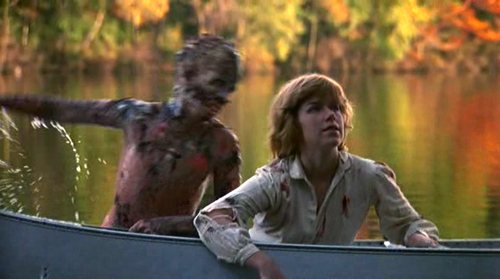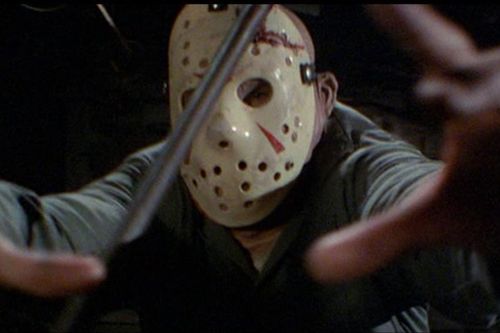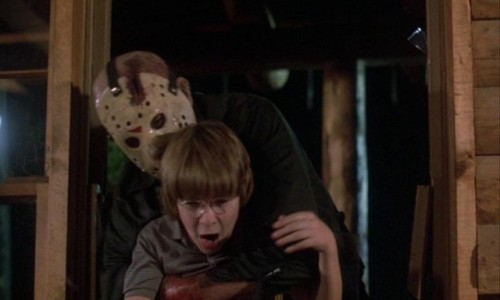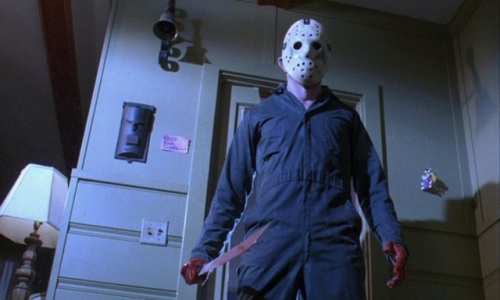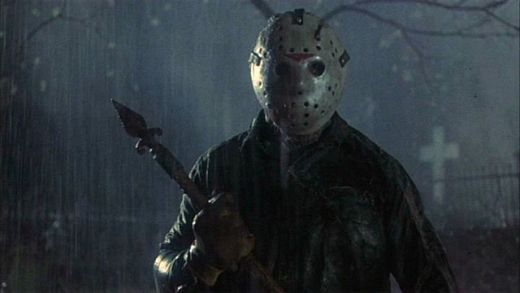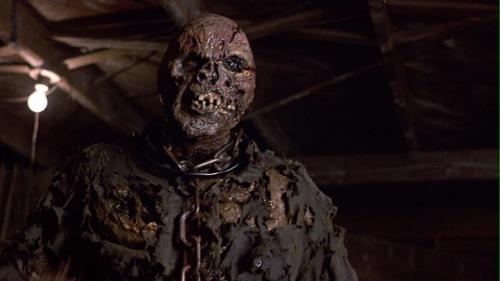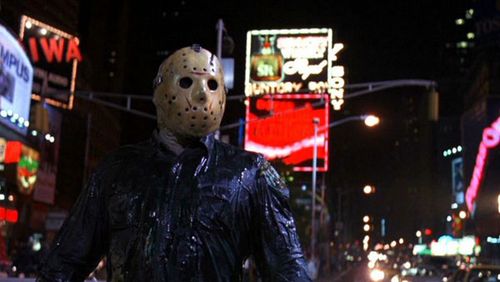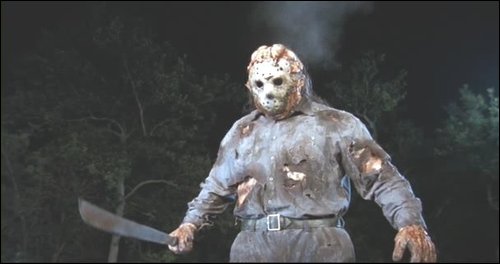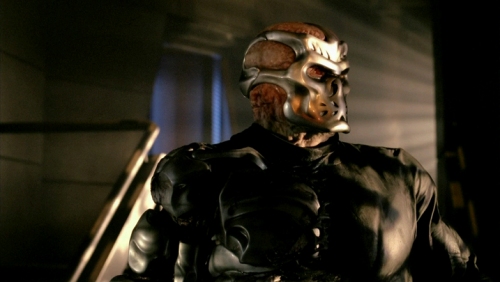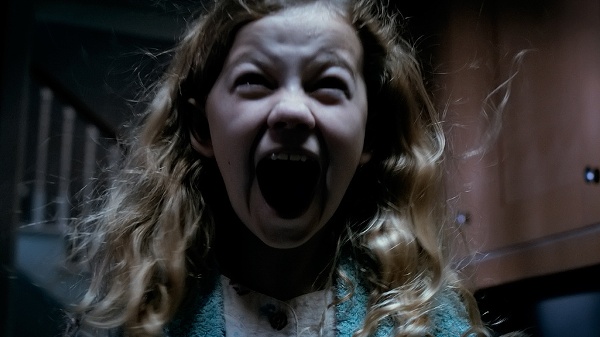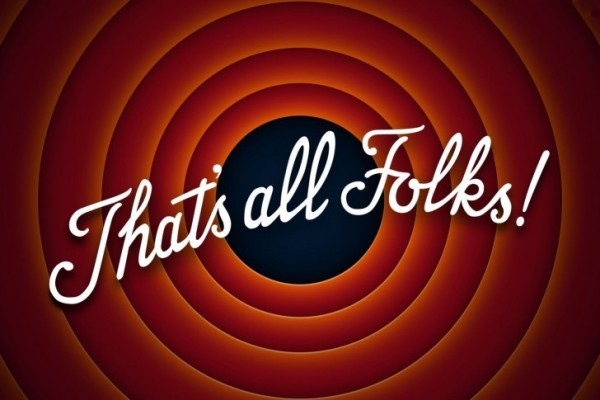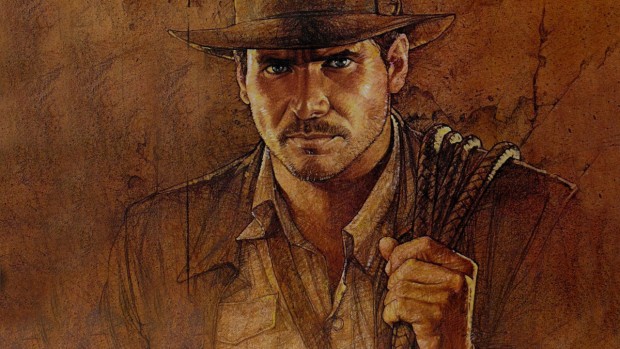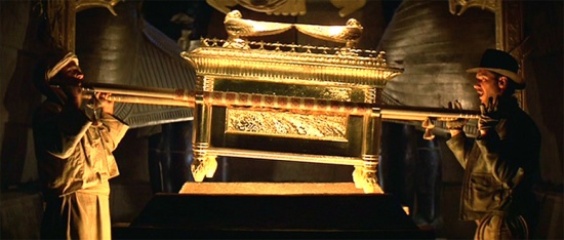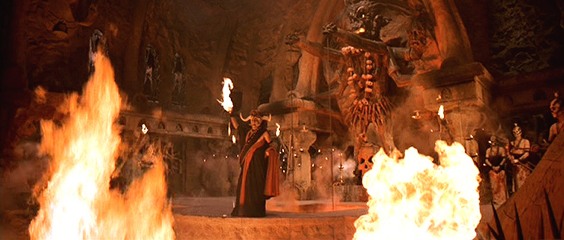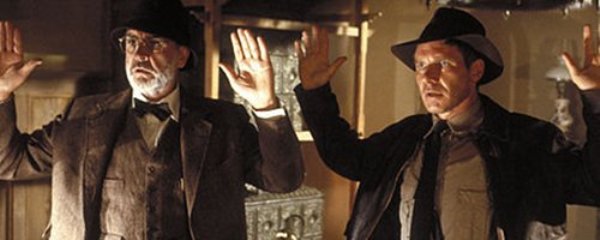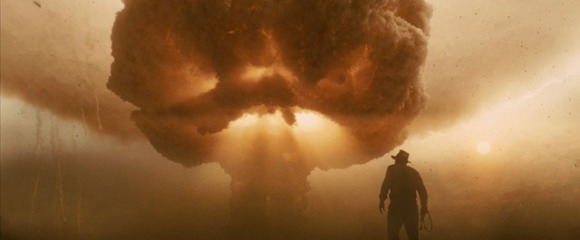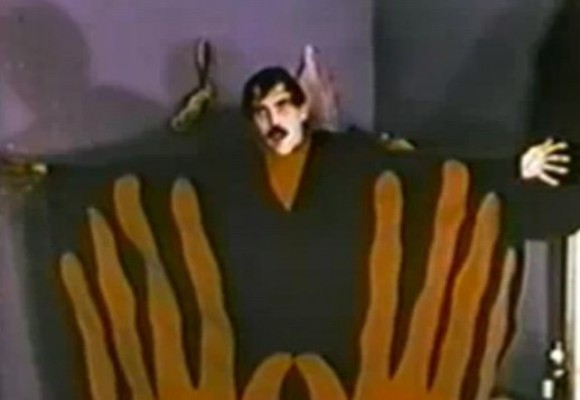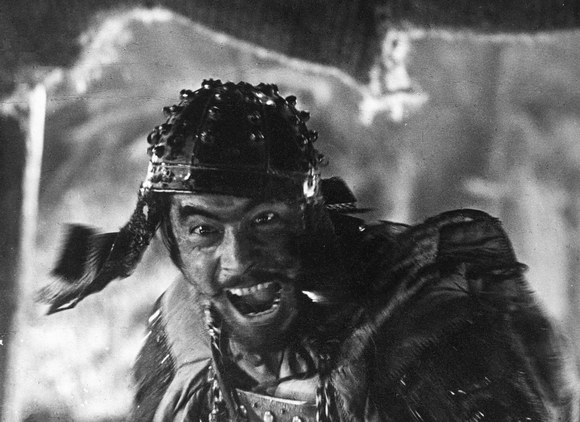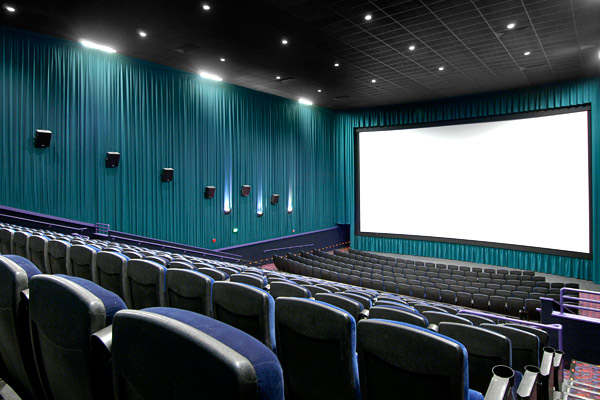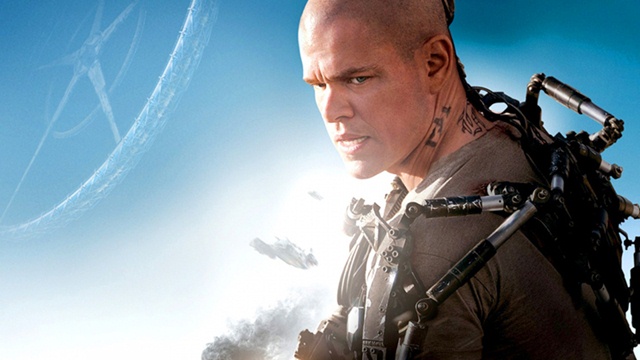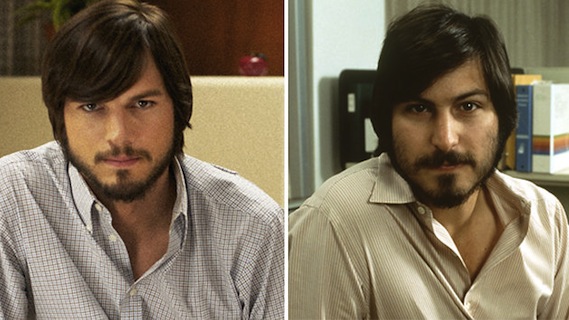After complaining last week about horror franchises that never end, I decided to actually examine one such franchise that has been going on now for over 30 years and still has managed to remain relevant in audience’s eyes. I’m speaking, of course, about the Friday the 13th franchise, and it’s seemingly unstoppable central villain, Jason Voorhees. Few other characters have spawned as many movies as Jason has, especially in the horror genre. For a total of 10 feature films, 2 spin-off crossovers, and one forgettable remake, Jason has earned a place in the pantheon of iconic movie monsters. Truth be told, I was familiar with the Jason character in general, through cultural osmosis, but I’ve been unfamiliar with many of his films. Also, the ones that I have seen, I hadn’t seen all the way through. So, this week, I set out to watch all 10 of the canonical Jason movies (thanks to AMC Network’s movie marathon for the Halloween season). Albeit, these films were in the edited form, but I was still able to take away from them how the character has been built up over the years and how each movie made an impact on one another. And watching the series the whole way through led me to some interesting observations.
First of all, what is my take on the series as a whole, before I delve into each one individually? For the most part, I think the character of Jason himself stands up much better than the movies that feature him. I actually began to like him more the further I went into the series. I love the fact that, for the most part, Jason never changes. He’s an unstoppable killing machine put on this earth to brutally murder randy teenagers who cross his path. What also surprised me was how every film in the franchise actually followed that same formula through every entry; with mixed results. The best parts in each movie are when Jason takes out his victims and the unique ways in which he does it. The low points are when the plots slow down to explain away what makes Jason tick. In the end, who cares. Jason just is; enough said. Overall he makes for one memorable character that deserves a long running series; even when not all of the movies are up to the same standard. Now, let’s take a look at the Friday the 13th series in more detail.
FRIDAY THE 13TH (1980)Directed by Sean S. Cunningham
The one that started it all, and a movie that you wouldn’t have expected to have started such a long running series. Set around the fictional Camp Crystal Lake in New Jersey, a group of camp counselors begin to fall prey to a sadistic serial killer who picks each one of them off, one by one. Many believe that the killer could be a former camp attendee named Jason Voorhees, who they thought had drowned in the lake years before and has now been resurrected to exact his revenge. Eventually, only one survivor named Alice (Adrienne King) seeks refuge with Mrs. Voorhees (Betsy Palmer) in the hopes that she may have answers regarding her murderous son. But as it turns out, mild-mannered Mrs. Voorhees has been the killer all along, hoping to avenge her son and keep the camp closed. Alice soon escapes and fights back against Mrs. Voorhees, eventually decapitating her with a wood ax. The film ends with Alice taking a boat across the lake to safety, but before she can reach the other side, she is attacked from behind by the decaying remains of Jason.
Friday the 13th was highly criticized when it was first released, but I think time has helped to give this film the strong reputation it deserves. It’s a well-crafted movie that does represent the best qualities of the horror genre. It’s shocking without being too exploitative and it’s story-line actually offers up some nice surprises. Betsy Palmer in particular gives an effectively chilling performance as Mrs. Voorhees, where she is able to balance the motherly aspects of the character well with the psychotic aspects, making her a well-rounded villain. What pleased me most about seeing this film is that all of the traits of a Friday the 13th movie are used here to their full potential, even when the iconic character isn’t present.
FRIDAY THE 13TH: PART 2(1981)Directed by Steve Miner
Released only a year after the first movie, which started off the short release pattern seen between the movies in the 80’s, Jason Voorhees made his full-fledged debut in this sequel. How he went from a child to a full-grown adult between films is never explained fully, but you’ll quickly forget about that once the killing starts. And Jason’s first victim turns out to be Alice (one again played by Adrienne King), which sets off the feeling right away that this was a new beginning for the franchise. Again, camp counselors are murdered one by one leaving just one survivor in the end to face Jason in a final showdown. She manages to outsmart the killer by finding the shrine Jason has set up in his old home with his mother’s rotting remains. Ginny, the final survivor, puts on Mrs. Voorhees sweater and makes Jason think that she is his mother, which manages to work, leading Ginny to subdue the monster by stabbing him in the back with an ax. The movie does an effective job of introducing Jason into the series as the killer, but the film suffers a bit by just following the same story-line as the first, more or less. Albeit, there’s not much more you can build upon in the first place, but it just felt like the film didn’t take enough chances apart from adding Jason, and just felt like more of the same, something that’ll plague most of the films yet to come.
FRIDAY THE 13TH PART 3 (1982)Directed by Steve Miner
Perhaps the most gimmicky of the Jason films, at least up to this point, this film became the first one to be shot in 3D. So, pretty much you’ll be seeing a lot of things pointing straight at the camera while watching this movie. That works well enough when you see someone’s eye get poked out with an arrow as it shots right off the screen, but when you start to see someone holding a shovel out in front of them for no reason other than to take advantage of the 3D gimmick, then it begins to take you out of the film all together. That’s part of the problem with Part 3; it just seemed to be made solely for the purpose of producing 3D gore. The story-line is exactly the same as the others and even steals some of the better scares out of the first two, including the body coming out of the lake scare. What is noteworthy in this film however is that it introduces one of the most iconic elements of the Jason character; the hockey mask. Surprisingly, for something that has become so synonymous with the character, it is given very little importance in this film. Jason just casually picks it up in a garage and puts it on and that’s that. But I guess like everything else in this series, the small things gain significance over time.
FRIDAY THE 13TH: THE FINAL CHAPTER (1984)Directed by Joseph Zito
Obviously with a title like that, you would think that this was meant to be the final Jason film, as parent studio Paramount Pictures wanted to put the series to rest after the previous movie had under-performed. Of course, this wouldn’t be the end of Jason Voorhees by a long shot; and in fact this movie would be the start of what would be known as the “Tommy Jarvis Trilogy” in the series. Jason once again begins murdering teenagers around Camp Crystal Lake, until he runs into the Jarvis family. Trish Jarvis (Kimberly Beck) holds up her family in the lakeside cabin they call home, including her younger brother Tommy (a pre-Goonies Corey Feldman). Eventually Jason follows them to their final refuge and is about to kill Trish when he is suddenly distracted by a quick thinking Tommy. In a weird finale to the film, Tommy distracts the monster by shaving his own head and making himself look like a young Jason without his mask. Once subdued, Jason is soon brutally killed by a crazed Tommy, to Trish’s horror. You heard that right, Jason meets his match, and it’s Corey Feldman. The ending to this film is a strange one, but it certainly left a much better impression on the series than the previous two films had.
FRIDAY THE 13TH: A NEW BEGINNING (1985) Directed by Danny Steinmann
Set several years after the previous film, we find Tommy Jarvis (now played as a teenager by John Sheppard) still haunted by the ordeal he went through as he recovers in a halfway house for troubled youths. One of his fellow residents named Joey is murdered in cold blood by another resident, and this incident suddenly begins a string of other murders. No one knows who is doing it until Tommy and a younger resident named Reggie spot the masked man in the act. This leaves Tommy powerless as he is still deeply haunted by Jason, but eventually he gets the courage to face his fears and subdue the murderer. Once the masked man is killed, we find out that it wasn’t Jason after all, but the father of the murdered Joey, seeking vengeance on the halfway house and its residents. This is the best of the Tommy Jarvis films and probably the best entry since the first Friday the 13th. It manages to give the story some depth when it needs it, but still keep the gory aspects as ridiculous and gruesome as ever. I liked the twist at the end that the killer was only posing as Jason, which was an interesting change of pace. The only aspect I didn’t like though was actually Tommy Jarvis himself. Actor John Sheppard just kind of sleepwalks through the film and makes Tommy a rather passive protagonist. Honestly, when you’re making Corey Feldman look like the better actor, then you’ve got a problem. The film does close on an interesting note, however, when Tommy dons the mask and looks as if he may become the next Jason himself.
FRIDAY THE 13TH PART VI: JASON LIVES (1986) Directed By Tom McLoughlin
Unfortunately, the follow-up film drops that interesting idea from Part 5 in favor of more of the same. The film finds Tommy Jarvis (now played by Thom Mathews) digging up the body of Jason in the hopes that he can destroy him once and for all, just in case he might come back. To his dismay, the body of Jason is reanimated once the coffin is open by a sudden bolt of lightning. And, like a hornet returning to it’s nest, Jason goes right back to Crystal Lake and begins killing teenage camp counselors once again. Tommy follows him there and manages to get Jason back into the lake by tying a huge boulder to the monster and drowning him once again. There’s not much to this plot and it rather weakly ties up the Tommy Jarvis story-line. What’s interesting about this film is that it introduces more self-referential humor into the series, much like what we’ve seen in the Scream films; for good and for bad. There’s a hilarious bit where Jason takes out a bunch of paint-ball shooters in the woods and Jason’s first victim is none other than Horshack from Welcome Back Kotter, or more specifically actor Ron Pallilo. But some of the other bits of humor seem either too forced or out of place. Overall, the story-line felt like a step backwards after the interesting turns it had taken in the previous installments.
FRIDAY THE 13TH PART VII: THE NEW BLOOD (1988) Directed by Joel Carl Buechler
This film could be considered Jason meets Carrie, although the title character from Stephen King’s famous novel plays no part in this story-line. In this movie, we are introduced to Tina Shepard (Lar Park Lincoln) who has telekinetic powers that she struggles to control. She is being brought back to Crystal Lake for treatment after an incident years ago with her powers had killed her father and left her in a mental institution. While at the lake, she attempts to bring her father back to life, but unintentionally she resurrects Jason, still anchored by the stone at the bottom. Once free, Jason begins attacking a group of vacationing teenagers housed at the lake, some of whom Tina has befriended. Tina soon learns that her powers are an asset rather than a curse, as she uses them to combat Jason and protect herself. Eventually she manages to return Jason back to the lake and hopefully has him destroyed for good. This film adds a lot of new things in the series and does them right. This is by far one of the better entries in the franchise, even if it has some of the same flaws as some of the other films. I like the injection of another supernatural element into the story-line, which could have been problematic if done poorly, but here it actually works. Lar Park Lincoln’s performance is much better than it needs to be and she manages to create a compelling protagonist in Tina. Also, we finally get to see what lies under the mask and a lot of credit goes to the make-up crew for creating a truly terrifying look for Jason. We see that he is now more creature than man, helping to make this both a terrifying and enriching entry into the series.
FRIDAY THE 13TH PART VIII: JASON TAKES MANHATTAN (1989) Directed by Rob Hedden
The title for this film is misleading because Jason doesn’t make it to New York until the final act. A better title would’ve been Jason’s Final Voyage, because the majority of the movie takes place on a ship travelling up the Jersey Shore; which looks an awful lot like Vancouver, BC. This film is much weaker mainly because it is one of the more gimmicky Jason movies. Mainly we just watch how many ways Jason can kill his victims on a boat, and that’s the movie. There’s some character development around a teenage girl named Rennie and her fear of water at play in this movie, but that’s about it. The film does gain some steam towards the end once Jason and the survivors reach dry land on Manhattan Island, mainly because they exploit the locals pretty effectively. When Jason chases down Rennie and her boyfriend down a subway, it’s effectively harrowing. Most of the rest of the movie is far less terrifying and oftentimes more unintentionally silly. I usually find that when a film series has to start injecting gimmicks into it’s story-lines, its a sign that the series is losing it’s way, and Jason Takes Manhattan is a clear example of that. That being said, Jason is still the best element in the movie, and he gets one really great moment when he faces down a champion boxer and takes his head off in one blow.
JASON GOES TO HELL: THE FINAL FRIDAY (1993)Directed by Adam Marcus
After a decade long run and 8 total films, Paramount was done with Jason and they sold the rights to the character over to New Line Cinema, the home of another horror icon: Freddy Kruger. Out of this deal, New Line started off their Jason “era” with this entry, the ninth in the series. Unfortunately this is the worst one by far. Here’s a “clever” idea for you; Jason dies in the first scene in the movie, but then transforms into a parasite that invades human bodies and turns them into monstrous killers. This lame idea somehow made it passed the development stage and became the basis of this really stupid movie. The Jason parasite makes no sense whatsoever, not even in the convoluted logic that has been built up in this series over the years, and sadly reduces the effectiveness of the character as a whole. Not only that, the plot and the supporting characters are also laughably bad. Even an attempt to create a bad-ass supernatural bounty hunter named Creighton Duke (Steven Williams) falls flat. For a while, this movie was so notoriously toxic that it killed the franchise for many years; not a good start for New Line Cinema. It’s a reaction that I totally understand. After watching all the films in succession, this was the film that nearly made me give up on the marathon. Yes, even Jason going to Manhattan didn’t make me want to stop watching the series. One particular interesting note about the film though is that after Jason is dragged down to Hell at the end, his mask is left behind, only to be dragged away by the claw-like glove of Freddy Kruger; a sign of things to come, but not for a long time after.
JASON X (2002)Directed by James Isaac
Nearly ten years after Jason Goes to Hell sank the franchise, New Line tried once again to make another Jason film, and this time they attempted probably the biggest and most outlandish gimmick of them all; taking Jason into Outer Space. Now a premise like that would lead you to believe that the series was getting desperate and that anything that made Jason a viable character before was now gone; but you would be wrong. Jason X fits squarely in that “so bad it’s good” category that you usually see happen to a lot of the SyFy channel brand of films. In fact, the movie does have the same look and feel of one of those notorious SyFy movies, like Sharknado. I think that has a lot to do with the execution done by director Isaac and his crew. The movie is reverential towards the Jason character and all of the common elements that make up a classic “slasher” movie, but it also plays out everything with it’s tongue firmly planted in its cheek. The characters are thinly drawn stereotypes on purpose, the CGI effects are atrociously awful, and the murders are so outlandish that you can’t help but laugh through it all. That helps to make Jason X not only tolerable, but probably the most thoroughly entertaining film in the series. Credit goes to the filmmakers for finding the right balance in this film. Unlike Part VI, every gag works here. And not only that, but it goes a long way towards enhancing the Jason character even further; especially when he becomes part cyborg towards the end. It’s great to see a film series actually change pace and tone 10 movies in and make it work. It’s no masterpiece, but I’m glad I stuck in there long enough to make it to Jason X, especially after the garbage that was Jason Goes to Hell.
And so, that’s my look at the Friday the 13th franchise. After seeing all ten films, I can appreciate the fact that people hold up Jason Voorhees as one of the icons of horror. I like that what started off as a small scale murder mystery in the first film has grown more outlandish over time, eventually leading to Jason being the first mass-murderer in space. While about half of the series is fairly forgettable (Parts 2, 3, 6, and 8) to just downright awful (Jason Goes to Hell), there are a couple films that do stand out as effective, like the memorable first entry and Part 7. Also, the series did create one gonzo of a finale with Jason X, which kind of falls into a category all it’s own. I didn’t look at the Freddy vs. Jason crossover because I felt that’s a separate franchise set apart from this, other than the tease in Jason Goes to Hell. Also, I’m ignoring the bland 2009 remake, mainly because it reinforces my initial complaint about how remakes are diminishing the horror genre as a whole by completely missing the point about what made these horror classics work in the first place. Jason’s rampage in cinemas may be over for now, but his legacy is still ongoing and it’s one that has left an impact on the genre for the better.

